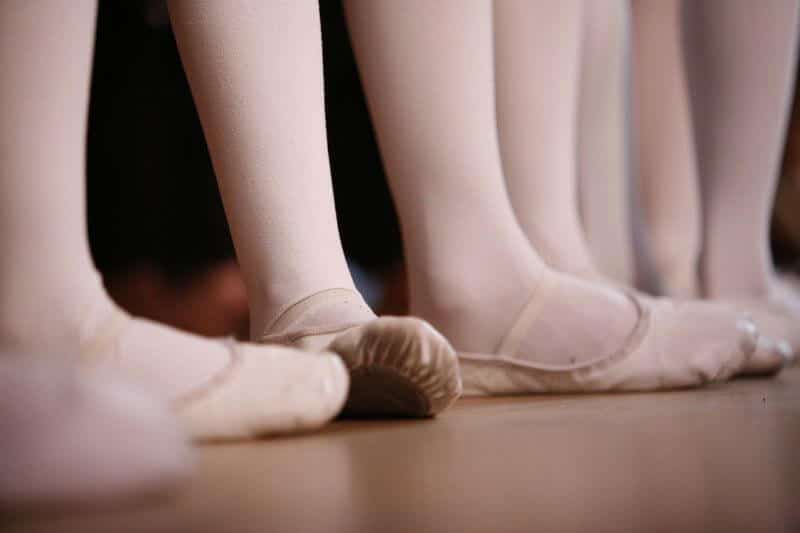If you were asked to guess which part of the foot can be affected by a tailor’s bunion (also called a bunionette), you’d probably say the big toe. After all, it’s well known that bunions are a common problem on the inner side of people’s feet. However, tailor’s bunions actually occur on the opposite side, right by the little toe.
What is a tailor’s bunion? This foot deformity is characterised by a bony lump on the outer edge of the foot, where the bottom of the smallest toe meets the head of a bone called the fifth metatarsal. If that bone is pushed out of alignment with the rest of the foot, it can end up pointing outwards, leaving you with a tailor’s bunion. A knock-on effect of the fifth metatarsal being forced out of its normal position is that the little toe is pushed towards the other toes, which compounds the problem.
The formation of a tailor’s bunion is comparable to what happens if you get a bunion by your big toe. The latter problem involves the first metatarsal turning outwards and your big toe turning inwards, leaving you with a bony lump in the affected area. A tailor’s bunion is rarer than a big toe bunion, but if you have one you’re more prone to developing the other.
Linked to Sitting Cross-Legged
The reason why a bony lump by your little toe is called a tailor’s bunion is because this foot condition is associated with the way tailors worked for centuries. They’d sit cross-legged while sewing; indeed the position became known as sitting ‘tailor’s style’. Men’s fashion website Put This On features photos of tailors working cross-legged in London during the 1950s.
‘Tailors used to sit like this for hours, which is why so many came out of the trade with physical ailments,’ remarks Put This On. Sitting cross-legged meant that the outside edges of their feet were subjected to excessive pressure. As a result, many tailors developed the foot deformity to which their profession gave its name.
Other Risk Factors Include Abnormal Foot Function
Tight, narrow shoes constrict your feet, which is why ill-fitting footwear is also linked to tailor’s bunions. The foot condition is ‘much more common in women than men,’ VeryWell Health observes, as wearing feminine shoes with pointed fronts or high heels puts feet under strain.
Bear in mind, though, that lifestyle choices aren’t the only risk factors. People who have a structural problem with their feet and/or suffer from poor foot function are more likely to experience this foot deformity than the rest of the population. If the fifth metatarsal is bowed or has an overly large head, you can all too easily develop a tailor’s bunion. Having abnormally-shaped little toes, loose ligaments or feet that habitually lean on their outer edges can also play a part.
Key Symptoms and Complications
With a tailor’s bunion, wearing shoes can be unpleasant. The bony lump rubs against your footwear, causing redness, swelling and pain. You may find a corn or callus on or near the bunion – the effect of friction on your skin. Having your feet measured professionally to ensure you buy shoes in the correct width fitting is advisable.
It’s important to check regularly for any broken skin around the bony lump that may result in infections. If you have diabetes-related nerve damage, keeping a close eye on your tailor’s bunion and attending diabetic foot assessments is particularly important, as you’re less likely to notice pain or other troubling symptoms.
Tailor’s Bunion Treatment at London Podiatry Clinics
Taking ibuprofen or applying an ice pack wrapped in a towel to the affected area for up to 20 minutes can soothe a sore tailor’s bunion. Little toe protectors and straighteners, as well as cushioning, are available from pharmacies.
But there’s only so much people can do at home; tailor’s bunions are a persistent problem and tend to get bigger over time. When you visit our London podiatry clinics, we can examine your tailor’s bunion, check for related issues and perform a biomechanical assessment, including gait analysis, to identify any underlying problems. We can give you the peace of mind that comes with a professional diagnosis and tailor’s bunion treatment plan.
In severe cases, steroid injections or surgery to remove the affected tissue/bone and straighten the little toe may be the best option. But for many people, non-invasive treatments, such as corn removal or prescription orthotics designed to support your feet and reduce pain, can provide sufficient relief.
Tailor’s bunions often appear when people are young and worsen during adulthood. If you have concerns about your children’s feet, we can help them too.
It’s time to tackle tailor’s bunions – simply contact Feet By Pody today.

